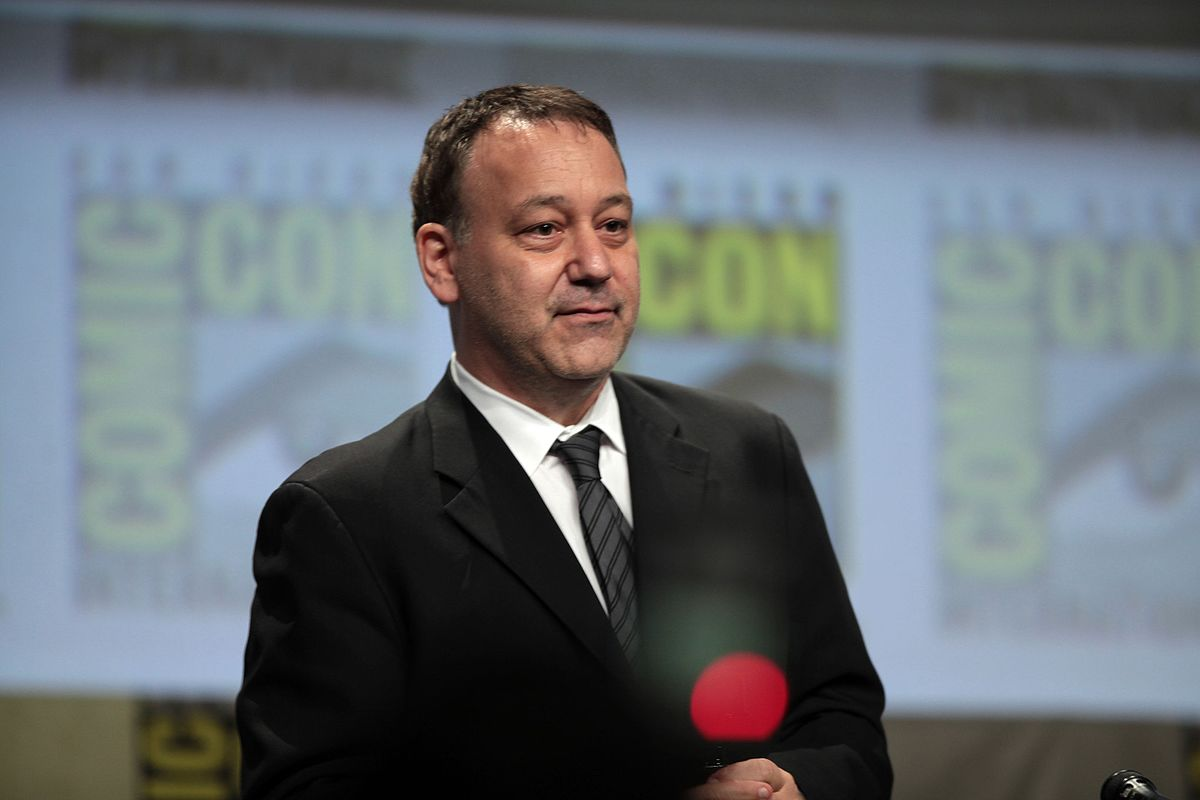Title of the work
Studio / Production Company
Country of the First Edition
Country/countries of popularity
Original Language
First Edition Date
First Edition Details
S03E01. “Mercenary”. Directed by Michael Hurst; Written by Robert Bielak. USA, Syndicated (MCA); September 30, 1996. 44 min. – S03E22. “Atlantis”. Directed by Gus Trikonis; Written by Roberto Orci & Alex Kurtzman. USA, Syndicated (MCA); May 12, 1997. 44 min.
Running time
Format
Date of the First DVD or VHS
Awards
1998 – Hercules: The Legendary Journeys (Joseph LoDuca) won “Top TV Series” in “ASCAP Film and Television Music Awards”.
Genre
Action and adventure fiction
B films
Mythological fiction
Television series
Target Audience
Crossover
Cover

We are still trying to obtain permission for posting the original cover.
Author of the Entry:
Joel Gordon, University of Otago, joel_gordon@hotmail.co.nz
Peer-reviewer of the Entry:
Elizabeth Hale, University of New England, ehale@une.edu.au
Lisa Maurice, Bar-Ilan University, lisa.maurice@biu.ac.il

Sam Raimi by Gage Skidmore. Retrieved from Wikimedia Commons, licensed under CCBY-SA 2.0 (accessed: December 30, 2021).
Sam Raimi
, b. 1959
(Producer)
Sam Raimi is an American filmmaker, actor and producer. He was born in Michigan (USA), to a conservative Jewish family, and attended Michigan State University. His career has been closely linked with that of Robert Tapert. Although Raimi intended to major in English, he chose to put his studies on hold in order to work on the feature film The Evil Dead (1981), after the success of his first co-operative production with Robert Tapert, The Happy Valley Kid (1977). Raimi is a co-founder of both Renaissance Pictures and Ghost House Pictures (see above). His solo-directorial work (distinct from productions with Tapert) include the original Spider-man trilogy (2002–2007) starring Tobey Macquire, and, most recently, Oz the Great and Powerful (2013). His most recent solo-producer role was for the crime-thriller, Don’t Breathe (2016). As an actor, Raimi has appeared in many of his own films as minor characters – such as his cameo appearances in The Evil Dead and its sequels. Raimi turned to television during the 1990’s, working together with Tapert as a producer for the franchises Hercules: The Legendary Journeys, Xena: Warrior Princess, Young Hercules and Spartacus.
Bio prepared by Joel Gordon, University of Otago, joel_gordon@hotmail.co.nz

Robert Tapert by Cooltv. Retrieved from Wikipedia, licensed under CC0 (accessed: December 30, 2021).
Robert Tapert
, b. 1955
(Author, Producer)
Robert Tapert is an American actor, producer and writer. Born in Royal Oak, Michigan (USA), he attended Michigan State University where he first began experimenting with filmmaking under the influence of Sam Raimi. During this time, they both worked on the film The Happy Valley Kid (1977) in which Tapert also starred in the leading role. Following the success of this venture, the pair began work on their first feature film, The Evil Dead (1981) – directed by Sam Raimi and starring Bruce Campbell – and, in order to assist with its production, Tapert, Raimi and Campbell (along with Irvin Shapiro) co-founded Renaissance Pictures in 1979. This trio have since worked together on numerous successful films – particularly in the horror genre – including: Crimewave (1985), Easy Wheels (1989), Darkman (1990), Lunatics: A Love Story (1991), Timecop (1994), 30 Days of Night (2007) and The Gift (2015). In 2002 Tapert and Raimi co-founded Ghost House Pictures known for, among others, the film franchises The Grudge (2004, 2006, 2009) and Bogeyman (2005, 2007, 2008). Tapert’s involvement in television began during the 1990’s with his most notable productions being the franchises of Hercules: The Legendary Journeys (1995-1999), Xena: Warrior Princess (1995–2001) and Young Hercules (1998–1999) – all of which included both direct-to-television movies and television serials spanning several seasons. It was during this period – in 1998 – that Tapert married New Zealand actress Lucy Lawless (the star of Xena), with whom he has since had two children. More recently, his interest in antiquity and television has returned with the serials Spartacus: Blood and Sand (2010), Spartacus: Gods of the Arena (2011), Spartacus: Vengeance (2012) and Spartacus: War of the Damned (2013) and plans for a Xena reboot for NBC. (see further, his official website, accessed: August 16, 2019).
Bio prepared by Joel Gordon, University of Otago, joel_gordon@hotmail.co.nz

Christian Williams by Pacunagonz. Retrieved from Wikimedia Commons, licensed under CC BY-SA 4.0 (accessed: December 30, 2021).
Christian Williams
, b. 1943
(Author, Producer)
Christian Williams is an American journalist and television writer from Brooklyn, New York. His career in the news industry began in 1972 as an assistant editor (Style Section) for The Washington Post. It was during his early years at the Post that Williams was given a unique insight into the film/television industry, serving as the editor on a behind-the-scenes exclusive when Robert Redford used the Post’s newsroom to research his film All the President’s Men (1976). In 1984 Williams became a reporter in Bob Woodward’s investigative team which led to his second interaction with the film/television industry: in 1986 Woodward’s team (Woodward, Williams and co-journalist Richard Harwood) wrote and featured in an ABC movie, Under Siege, which was based upon the group’s reporting on domestic terrorism. Williams then continued to dabble in the television industry, co-writing (alongside Woodward) an episode of the television drama series Hill Street Blues (1981–1987), before formally leaving journalism for a career as a television writer – specializing in one-hour drama television shows. He went on to co-create (alongside David Milch) the drama Capital News (1990) before assisting in the creation of Hercules: The Legendary Journeys franchise (which began with the five direct-to-television films). Unlike Tapert and Raimi, however, Williams was not directly involved in the production of the Hercules: The Legendary Journeys serial beyond the pilot films. Williams went on to continue writing for television, for example as the co-executive producer of the drama Six Feet Under (2001–2005), until he retired in 2010. He has since turned his interests to authoring books and sailing.
Bio prepared by Joel Gordon, University of Otago, joel_gordon@hotmail.co.nz
Casting
Main Cast:
Hercules: Kevin Sorbo,
Iolaus: Michael Hurst.
Supporting Cast:
Alcmene: Liddy Holloway,
Aphrodite: Alexandra Tydings,
Autolycus: Bruce Campbell,
Cassandra: Claudia Black,
Deianeira: Tawny Kitaen,
Falafel: Paul Norell,
Hades: Erik Thomson,
Iphicles: Kevin Smith,
Jason: Jeffrey Thomas,
Salmoneus: Robert Trebor,
Strife: Joel Tobeck,
Xena: Lucy Lawless.
Adaptations
Sequels, Prequels and Spin-offs
Summary
Season three of HTLJ, consisting of twenty-two episodes, maintains the successful format of the prior two seasons: a series of self-contained narrative episodes that derive inspiration from tropes associated with both the ancient world and fantasy genres. Examples of the former include episode 2 (Doomsday) in which Hercules assists the inventor Daedalus with his grief over the death of his son Icarus (who famously died when the pair tried to escape Crete – see, e.g., Ovid Met. 8); episode 5 (Not fade away) which includes a catabasis to retrieve the ghost of Iolaus from the underworld; episode 13 (Encounter) with the Golden Hind of Artemis (commonly known in antiquity as the Ceryneian Hind and famously depicted as one of Hercules’ labours); and episode 22 (Atlantis) in which Hercules finds himself on the island of Atlantis (although a significantly different version to that found in Plato’s Timaeus and Critias). More fantastically driven episodes include episode 4 (Mummy dearest) with Hercules battling a cursed Egyptian mummy and episode 10 (The lady and the dragon) with Hercules battling a dragon. The narrative arc of the season as a whole sees Ares, identified both as the god of war and Hercules' half-brother, replace Hera as the show's primary antagonist with Hera remaining the antagonist for the first half of the season (e.g., ep. 5 Not fade away, ep. 8 Prince Hercules) and Ares’ beginning to replace her from episode 13 (Encounter) onwards (on the reasons for this shift, see analysis). This said, there is very little overarching narrative to unite the individual episodes with this season being more disjointed than previous seasons. This can be attributed to, not only the shift in villain, but the increasing popularity of the other spin-offs and the various attempts to develop the show into a multi-series franchise, rather than simply a standalone narrative (on this broadening of the franchise, see analysis).
Analysis
Despite the increasing reliance upon figures and tropes that derive from material outside of ancient sources for the narratives of individual episodes, the continued characterisation of Hercules as a (positive) civilizing force -- which, from a modern perspective, extends to include his depiction as a champion of the people -- ensures that there is a degree of continuance with ancient depictions of Hercules (Hercules’ labours, in particular, are a prime example of this role as a civilizing force in antiquity). Furthermore, the ability of Hercules’ character to adapt to such a wide range of ‘fictional’ circumstances (ancient or modern alike), while maintaining continuity with this overarching heroic portrayal, is a large part of his appeal and success within popular culture – and, historically, this has always been the case. This flexibility echoes Hercules’ on-screen presentation during the mid-20th century with the peplum genre (i.e., the Italian sword-and-sandal films of the 50s-60s). This genre of film played a prominent role in (re-) introducing the figure Hercules to modern audiences, firmly cementing his popularity within pop culture, while also successfully transplanting Hercules into contexts far removed from the ancient sources – for example, Hercules against the Moon-Men (1964) or Hercules, Samson and Ulysses (1963). Thus, this season walks a fine balance in drawing upon both ancient and modern depictions of Hercules-the-hero.
As in its earlier seasons, season 3 of HTLJ commonly presents figures and/or mythological narratives derived from antiquity in an anachronistic fashion, appropriating ancient source material into settings that better suit modern sensibilities and characterisations (i.e., rationalization). Consider the following two examples as case in point. The story of Daedalus and Icarus received multiple ancient treatments during antiquity (including, Ovid Met. 8, Hyg. Fab. 40, Apollod. Epit. 1.12–13, and multiple vase painting exemplars). Episode two, Doomsday, draws upon the ancient tropes of Daedalus as a renowned inventor (in this episode, for example, he is creating siege weapons) and the death of his son Icarus. Hercules’ ‘quest’ is to resolve Daedalus of his guilt over Icarus’ death which, while the intervention of Hercules is an entirely novel element, finds a degree of ancient precedent in that Daedalus’ grief is a recurrent ancient trope (e.g., Verg Aen. 6.47–50, Sil. Ital., 12.99–101). Yet, this episode also takes several liberties: it is not set in Crete (nor, even the related setting of Athens), but Euboa (perhaps intended to be Euboea?); Minos and Pasiphae are notably absent with Daedalus instead under the ‘patronage’ of an evil king named Nikolas; and there is no inclusion of the Labyrinth, minotaur and Theseus who are mainstays in the Daedalus/Icarus myth. This said, the rationalizing of Daedalus’ narrative as occurs in this episode is an act with a strong pedigree in the ancient world: writers such as Palaephatus and Diodorus, for example, replaced Daedalus and Icarus’ wax wings with the more ‘realistic’ oars of a boat by which they seemed to soar across the ocean waves. A similar appropriation and use of anachronisms can be demonstrated in episode 7, Not fade away. This catabatic episode finds precedent in Hercules’ two well-known underworld visits: first, to capture Cerberus (and the simultaneous rescuing of Theseus); and, second to rescue Alcmene on Admetus’ behalf (depicted in Eur. Alc.) – it is notable that this is not the only catabasis that Hercules embarks upon within the HTLJ series (cf. S0, E4 Hercules in the Underworld; S2, E8 The other side; S2, E11 Highway to Hades). This said, the exact details of and reason for the catabasis shares much more in common with catabasis of another mythical hero, Orpheus (e.g., Eur. Alc. 357–362, Ovid Met. 10), since Hercules makes a deal with Persephone in order to restore a loved-one who has died (here, Hercules’ companion Iolaus, rather than Eurydice, Orpheus’ wife). The reason for Iolaus’ death is due to the HTLJ narrative arc exploring the Hera-Hercules animosity, of which he is an ‘innocent’ casualty.
It is notable that season three also displays an acknowledgement by the creators of the growing popularity of the HTLJ franchise beyond this particular serial. Several characters appear in this season who would recur in, or indeed found their origins within, the wider Hercules-Xena-verse (i.e., the spin-off serials Xena: Warrior Princess and Young Hercules). For example, the Golden Hind appears here in episode 13 (Encounter) and would then make a tie-in appearance in Young Hercules episode 36 (Hind Sight) the following year. More significantly, however, season three is notable for introducing Kevin Smith as the god of war, Ares, a foe who would replace Hera as the primary antagonist in later seasons (as well as adopting this role for the Young Hercules spin-off). Smith’s Ares had risen to popularity in the Xena serial spin-off and, since Xena is widely acknowledged as being the more popular of the two serials, this adoption of Ares is indicative of such prevalence and a clear interest in tying together the HTLJ and Xena narratives (i.e., HTLJ s. 3, 1996, with Xena s. 2, 1996–1997, and so forth). Indeed, from this season onward, the narratives of HTLJ and Xena would begin to intertwine and feature more cross-over material.
Season three also contains a unique episode entitled Les Contemptibles (ep. 17). This episode is not set during antiquity but rather during the French Revolution (in particular, the year 1789) with the characters of the serial re-cast as figures appropriate to this period of history (i.e., Hercules and Iolaus are Robin-Hood-esque highway robbers). This said, continuity with the narrative’s story-arc is maintained via flashbacks of Hercules’ exploits from earlier in the season (perhaps as much as a third of this particular episode is made up of clips from prior episodes). This style of ‘clip episode’ was first introduced in the season 2 episode The cave of echoes – although this earlier version remained set in antiquity rather than transplanted into a new milieu. These ‘clip episodes’ were common during this period of television production and were viewed as a way for companies to save money while still producing ‘new’ material for consumers. Les Contemptibles also presents an interesting example of the popularity of this franchise with teenage viewers: the character of Jean-Pierre (i.e., Iolaus) names the group of outlaws “the powerful rangers” – a nod to the popular Power Ranger series which was also made in New Zealand throughout its production history (a total of 12 out of the 22 seasons) and in which both Michael Hurst (Iolaus) and Rose McIver (Ilea) had also appeared.
Further Reading


